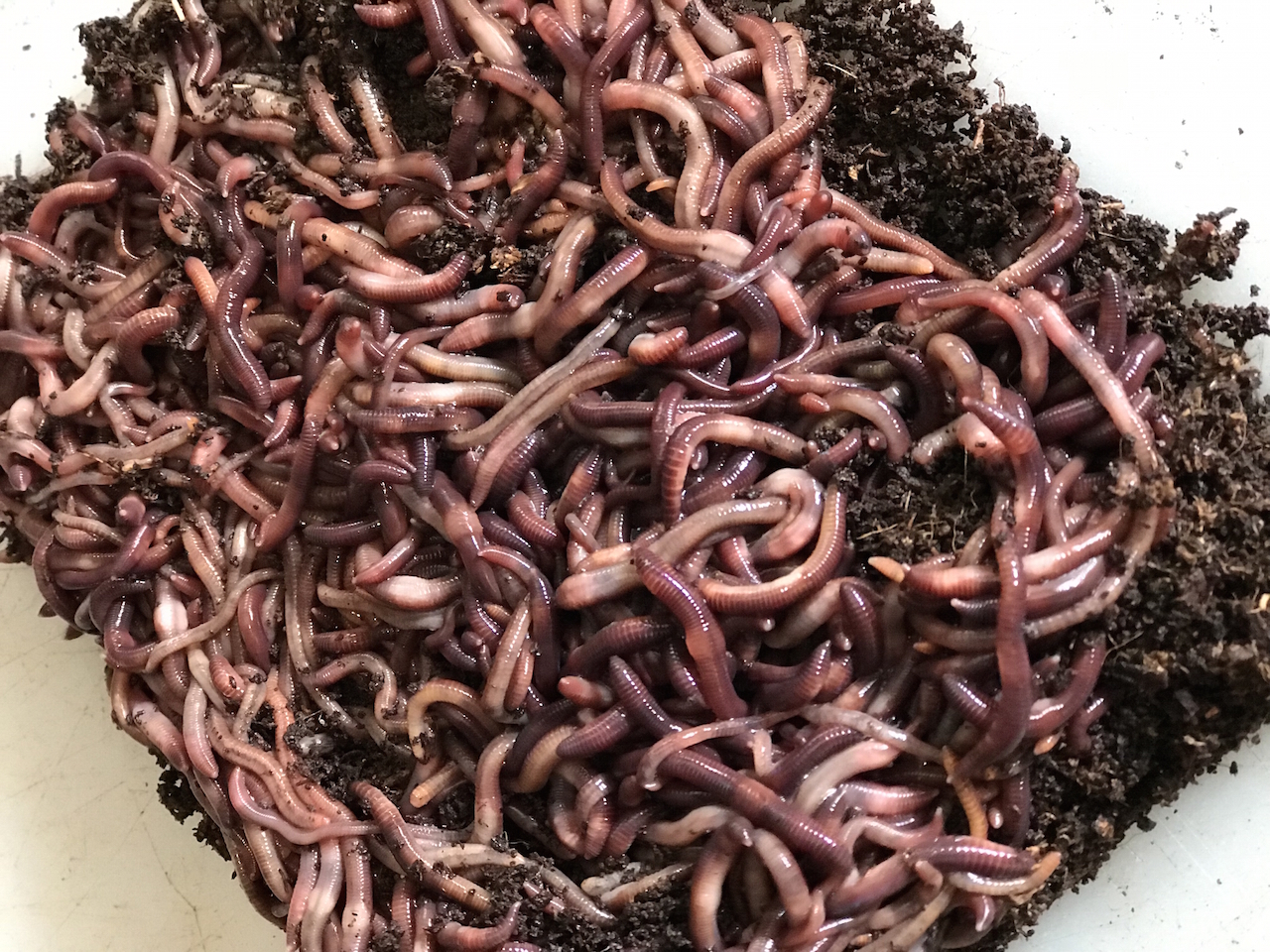Red Wiggler Worms - All-natural Remedy for Environmentally Friendly Composting
Wiki Article
Red Wiggler Worms Demystified: Unlocking the Keys of Vermiculture for Greener Living and Nutrient-Rich Dirt
In the realm of sustainable practices for enhancing dirt high quality and promoting eco-conscious living, red wiggler worms play a critical yet frequently overlooked function. Red Wiggler Worms. Comprehending the ins and outs of caring for these worms, optimizing their environment, and utilizing their spreadings can lead to a greener way of life and healthier soil for plants to flourish.The Function of Red Wiggler Worms
Red Wiggler worms play a crucial role in composting systems by successfully damaging down organic matter right into nutrient-rich castings. These ravenous eaters take in a variety of natural products, such as cooking area scraps, yard waste, and paper items. As they feed, the worms' digestive processes break down the organic matter right into a fine, dark, and nutrient-dense material known as worm castings or vermicompost.The castings generated by Red Wiggler worms are very beneficial for soil wellness and plant growth. They are abundant in essential nutrients like phosphorus, nitrogen, and potassium, which are vital for sustaining healthy plant advancement. In addition, worm spreadings consist of useful microorganisms and enzymes that assist enhance soil structure, rise water retention, and enhance nutrient uptake by plants.
Benefits of Vermicomposting

It improves dirt structure, improves soil oygenation, and boosts dirt moisture retention. Vermicompost also improves the dirt with essential nutrients like potassium, nitrogen, and phosphorus, promoting plant growth and total dirt fertility.
Additionally, vermicomposting assistances lasting horticulture techniques by giving a chemical-free and all-natural alternative to artificial fertilizers. Red Wiggler Worms. This eco-friendly method not just enriches the soil however also helps in reducing reliance on damaging chemicals, promoting a greener and extra lasting method of gardening
Establishing Up a Worm Container
When establishing a worm container for vermicomposting, proper arrangement is essential to make sure the success of the composting procedure. The very first step in establishing a worm bin is choosing a suitable container. This can be a plastic container or wood box that gives enough space for the worms to move and has appropriate drainage openings to stop waterlogging. Next, a bed linens product such as shredded paper, cardboard, or coconut coir need to be included in the container. This bedding provides a comfy environment for the worms and assists maintain moisture degrees.After adding the bedding, introduce the red wiggler worms to the bin. It is recommended to begin with a handful of worms and progressively boost as they multiply. The worms must after that be given with food scraps such as fruit and veggie peels, coffee premises, and eggshells. It is vital to stay clear of including meat, dairy, oily, or salted foods to stop attracting bugs and developing undesirable smells.
Consistently keep track of the moisture degrees and temperature in the worm bin to make certain ideal conditions for the worms. With proper setup and maintenance, the worm bin will efficiently transform organic waste right into nutrient-rich compost for your plants and yard.
Collecting Worm Castings
To effectively accumulate nutrient-rich worm spreadings from your vermicomposting system, a methodical harvesting technique is important. There are a couple of key actions to comply with to make sure a successful procedure when see here now it comes time to harvest the worm castings. Stop including fresh food scraps to one side of the worm bin for a couple of weeks before harvesting. This encourages the worms to move sideways with fresh bed linen and food, making it less complicated to scoop out the castings from the opposite side.
Troubleshooting Common Issues
Determining and addressing common obstacles that might arise throughout the vermicomposting procedure is essential for maintaining a healthy and productive worm bin. One usual problem that vermicomposters experience is overfeeding. Including excess food scraps can cause a build-up of moisture and acidity in the worm bin, potentially hurting the worms. To avoid this, feed the worms in moderation, making sure that the food scraps are adequately damaged down this page before including extra. One more issue is unpleasant smells rising from the worm container. Foul smells show anaerobic problems, normally brought on by overwatering or insufficient air flow. To treat this, adjust the moisture degrees by adding completely dry bedding products like shredded paper or cardboard and increase aeration by turning the bed linen routinely.
In addition, if the worm populace is decreasing or the worms appear undesirable, maybe as a result of environmental stressors such as extreme temperature levels or pH levels. Keeping an eye on these elements and making necessary changes is important for the health of the worms. By repairing these typical problems quickly, vermicomposters can ensure a smooth and successful vermicomposting process while maintaining a thriving worm populace.

Conclusion
Finally, red wiggler worms play a critical function in vermiculture by breaking down raw material right into nutrient-rich dirt. The benefits of vermiculture include greener living and improved soil quality. Establishing up a worm bin is important for effective vermiculture, and gathering worm spreadings offers valuable garden compost for horticulture. By recognizing and fixing common problems, individuals can open the tricks of vermiculture for lasting living and healthier soil.As they feed, the worms' digestive system processes break down the organic matter right into a fine, dark, and nutrient-dense material known as worm castings or vermicompost.
The spreadings generated by Red Wiggler worms are highly helpful for dirt wellness and plant growth. Including excess food scraps can lead to a build-up of wetness and acidity in the worm next page bin, possibly damaging the worms.In addition, if the worm population is declining or the worms show up harmful, it could be due to ecological stressors such as extreme temperature levels or pH levels. Establishing up a worm container is crucial for effective vermiculture, and collecting worm spreadings provides valuable garden compost for gardening.
Report this wiki page